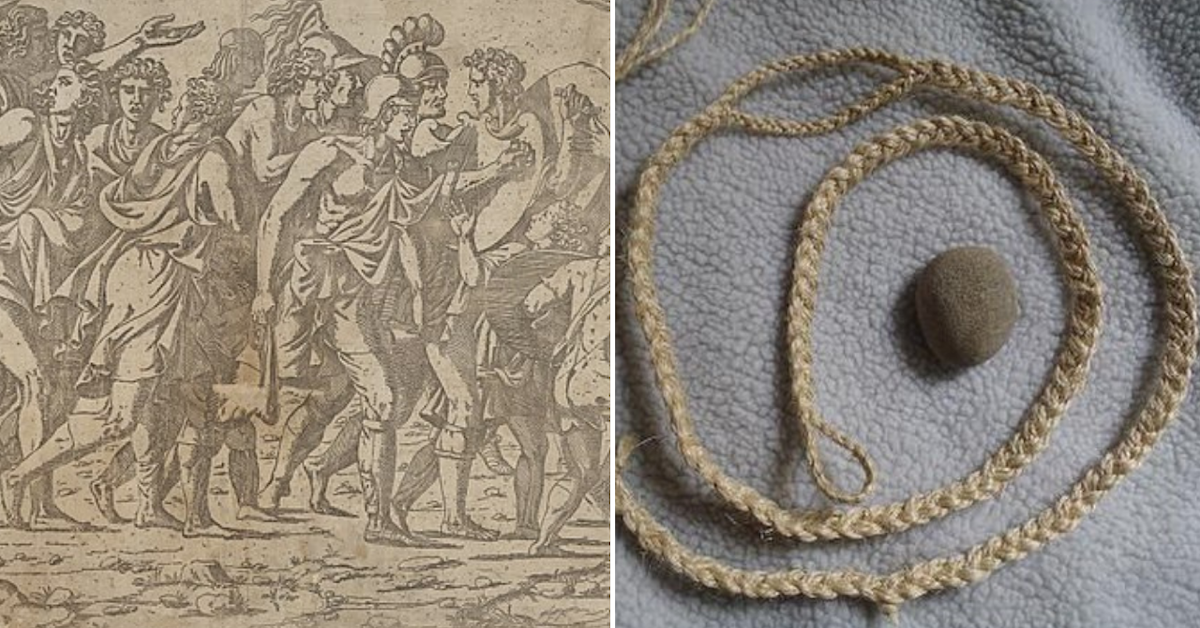For most, the sling is known as the weapon of choice for cartoon troublemaker Bart Simpson. However, it used to be a widely used weapon by many ancient armies. It was a revolutionary invention that produced widespread military success, and while it’s largely fallen out of use, it’s still considered a formidable combat tool.
The basics of sling weaponry
A sling weapon is used to launch projectiles across long distances. When properly positioned between one’s fingers, it acts as an extension of the human arm, allowing for more accurate precision and a greater range than other early weapons.
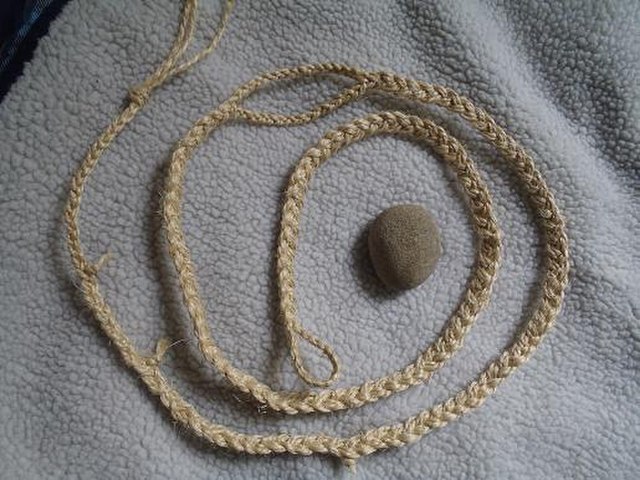
While now commonly made from hemp and other cord-like material, slings used to be produced from animal hide and various grasses. Projectiles were primarily stones found in local waterways, but also consisted of ceramic, lead, and other dense materials. They would sometimes feature unique engravings.
To be operated correctly, Old World societies started extensive training during childhood. Otherwise, it was difficult to ensure the projectiles reached their intended target. When properly used, slings were capable of causing blunt force trauma that shattered bone, damaged organs, and sometimes resulted in death.
Neolithic origins and the Old World
The earliest evidence of sling weaponry comes from as far back as 10,000 B.C. It’s believed to have been invented during the Upper Palaeolithic, similar to spears and the bow and arrow. It was used by the neolithic people for hunting purposes and spread across the world. However, it’s currently debated if this spread was the result of independent invention or cultural diffusion.
The oldest surviving slings were found on the coast of Peru and date back to approximately 2,500 B.C. Their use spanned into the Incan Empire, where along with hunting, they were used in warfare and during ceremonies. On the flip side, the oldest surviving slings from the Old World were located in the tomb of King Tutankhamen, who died in 1325 B.C.

Sling weaponry in the Old World was typically used during combat. They were the weapon of choice for many Hebrew warriors, and their use helped its spread to other cultures. Representations of their use can be found throughout the ancient world, from Assyria and ancient Egypt to the columns of Aurelius and Trajan. The oldest artistic representation is from Çatalhöyük, dating back to 7,000 B.C.
A weapon of Biblical proportions
One of the more famous depictions of sling weaponry comes from the Biblical tale of David and Goliath. 3,000 years ago, King Saul led his army of Israelites to the valley of Elah, where they encountered a force of Philistine invaders. From the enemy’s ranks came a soldier clad in bronze armor and carrying a spear, who challenged the Israelites to combat.

The only warrior to accept was David, a young Israelite with little experience. David, not wearing any armor, approached Goliath with only a sling and a sheathed sword. He loaded his sling and fired, striking Goliath in the forehead and killing him instantly. He then proceeded to behead him and bring his head back to Jerusalem as a sign of triumph.
The tale is often used to show how underdogs can emerge triumphant in any situation. It also effectively details how useful sling weaponry could be during combat.
Use by the Ancient Greeks
The use of sling weaponry in Ancient Greece appears in the writings of Homer, whose characters kill enemies by hurling stones at them. Numerous individuals from the era were skilled with the weapon, including the Acarnanians and those along the northern coast of the Peloponnese.
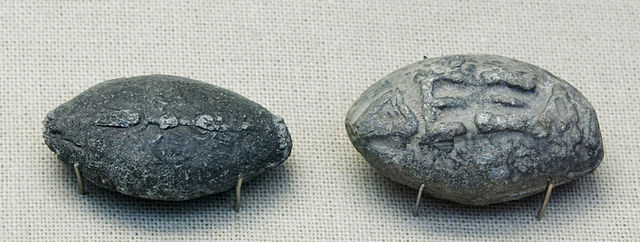
The Greeks first recognized the importance of sling weaponry during the Peloponnesian War. They’d previously been partial to heavy infantry, but hadn’t overlooked the effectiveness of mercenary slingers. They recruited them from Rhodes as well as Acarnania and Achaea. When the Boeotians required slingers during the Battle of Delium, they recruited them from the Malian Gulf.
“The Ten Thousand” are considered the most famous Greek mercenary group to utilize slings. It was made up of Greek mercenaries who ended up heavily relying on slings to defeat their enemies. For a while, their slingers were considered more effective than their Persian counterparts, as their lead ammunition traveled longer distances.
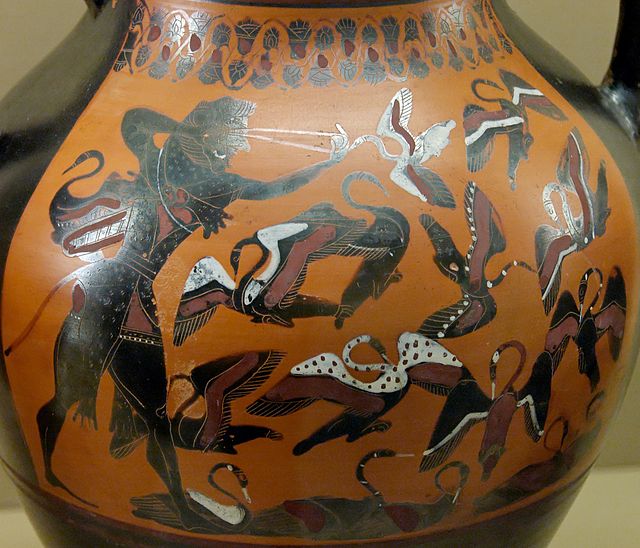
As early as the fourth century B.C., Thracian slingers were being hired by mercenary groups of archers and javelin-men. Philip II of Macedon recruited them, and they and his army besieged the city of Olynthus in 348 B.C.
Sling combat against the Ancient Romans
Slings were one of the primary weapons used against Ancient Roman warriors. They were often wielded by slingers from the Balearic Islands, who, according to the works of Livy, underwent intense training to master the weapon.
They were first recruited by the Carthaginians during the fifth and fourth centuries B.C. to fight against the Greeks. By the third century B.C., their primary opponents were the Romans. The Balearics were recruited by Hannibal Barca, where they fought the Romans throughout the Punic War. The Roman warriors were often no match for them and suffered grand defeats.
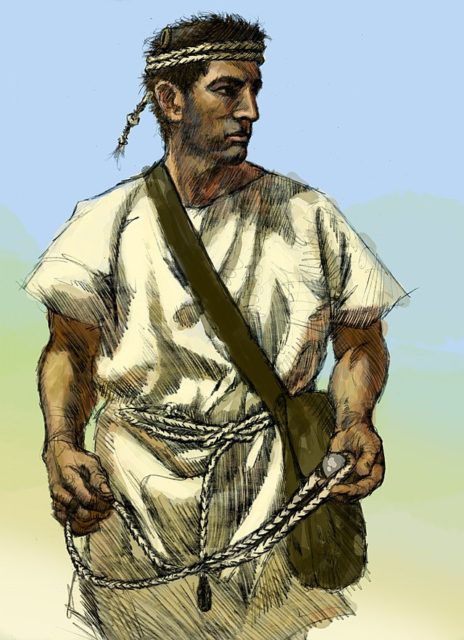
As the war drew on, Hannibal continued to utilize the Balearic Islanders. However, the Battle of Zama in 202 B.C. saw the Carthaginians lose to their Roman enemies, starting their decline. They began to recruit the Balearic slingers less, and the slingers eventually found themselves fighting for the Romans after Carthage was destroyed and their islands were conquered.
Slingers in Ancient Rome
The Romans never created their own cohort of slingers, as no one was thoroughly trained to handle the weaponry. Caesar recruited the Balearics to battle against the Gaul in 54 B.C., while slingers from Achaea were recruited during the second century B.C. for the siege against the Sameans. They also recruited them during the siege of Judea against the Hebrews during the first century A.D.
The Romans worked to develop a new type of projectile. Using ceramic bullets with holes drilled into them, the aim was to appear more intimidating to the enemy. This was achieved by the “whistling” sound made when the projectiles were launched. While effective in this sense, their small size meant they weren’t capable of causing severe injury.
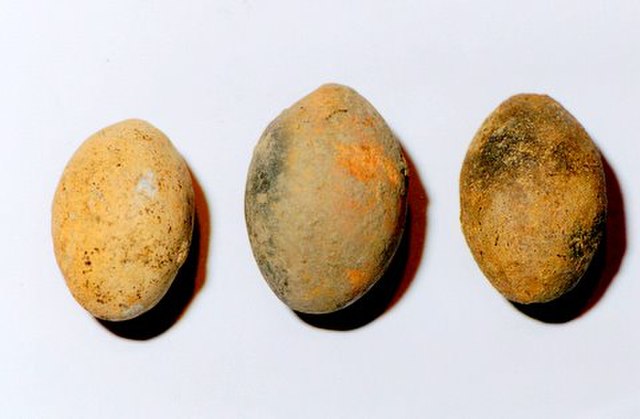
These unique projectiles share a similar design to those seen in ancient Greece. While still up for debate, it’s believed the Greeks used them to poison the enemy upon launch. It’s thought they were largely ineffective, given the minuteness of the holes.
Use during the Middle Ages
The Middle Ages is seen as the beginning of the end for the sling, but it actually saw its decline begin with the advent of kestros weaponry around 170 B.C. This was a play on the classic sling, but featured a wooden shaft attachment and a projectile dart. It required less training to use, as opposed to the ancient sling.
Along with the evolution of military weapons, the decline came about through the conquering nature of societies during this time period. As conquered populations were assimilated, they abandoned their own traditions and adopted new ones.
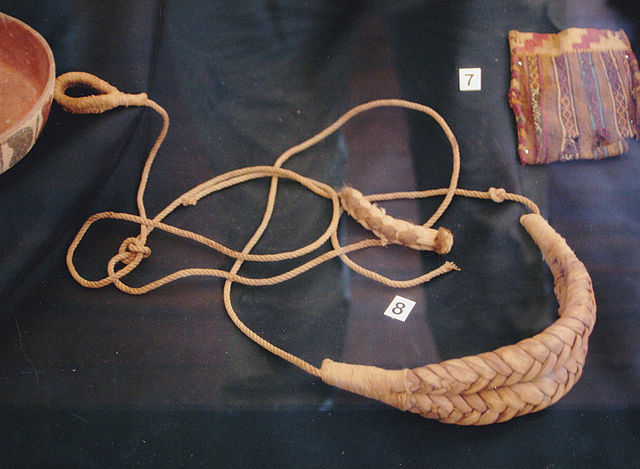
Sling weaponry was initially used in siege warfare during the Middle Ages, but was updated to launch larger projectiles. Known as staff slings, they were easier to operate and considered more reliable when launching grenades over medieval fortifications. They also doubled as a staff weapon in close-combat situations.
All forms of sling weaponry became largely obsolete with the invention of the longbow and the advent of gunpowder. Despite this, it was still used in naval warfare, as it was less susceptible to moisture damage than bowstrings.
Sling weaponry in modern times
Despite its decline, sling weaponry made an appearance during the Spanish Civil War and the First Finish-Soviet War, also known as the Winter War. During the Spanish Civil War, international brigades launched grenades into enemy territory using slings, while the Finnish used the weaponry to launch Molotov cocktails at Soviet tanks during the Winter War.

Slings nowadays have been adopted by protestors, especially in the Middle East, to launch projectiles against military members and riot police. They are used by wilderness enthusiasts as a survival technique, as well as Arab nomads and Bedouins to ward off wild carnivores.
More from us: Did The Trojan War Really Happen? Here’s What We Know
The ceremonial slings used in the South American Andes still appear during mock battles and ceremonial dances. They’re also used by llama herders to ensure individual livestock don’t wander too far from the herd.
